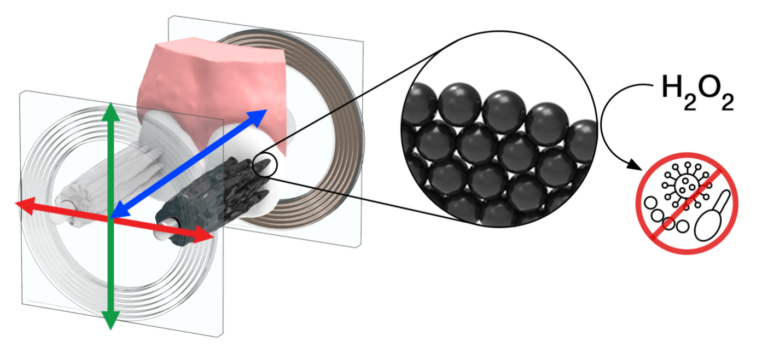Researchers from the University of Pennsylvania have designed a swarm of re-configurable microbots to automate the removal of mouth bacteria and dental plaque.
The microswarm could be a single solution to replace toothbrushes, dental floss and mouthwash.
The multidisciplinary team includes researchers from the School of Dental Medicine and School of Engineering and Applied Science.
The swarm’s building blocks are iron oxide nanoparticles with both catalytic and magnetic activity.
The catalytic reaction drives the production of microbials to clean the mouth, while the bots’ magnetic qualities allowed for full control over their movement and shape via a magnetic field.
The field’s precision of control meant the swarm could configure into both bristle-like structures or strips to move between teeth.
The researchers also showed they could also adjust bristle density, which allowed the bots to remove harmful material without causing damage to the gums.
“Routine oral care is cumbersome and can pose challenges for many people, especially those who have hard time cleaning their teeth” says Dr Hyun (Michel) Koo, a professor in the Department of Orthodontics and and Pediatric Dentistry in Penn’s School of Dental Medicine, and co-corresponding author on the study.
“You have to brush your teeth, then floss your teeth, then rinse your mouth; it’s a manual, multistep process.
“The big innovation here is that the robotics system can do all three in a single, hands-free, automated way.
“It doesn’t matter if you have straight teeth or misaligned teeth, it will adapt to different surfaces… the system can adjust to all the nooks and crannies in the oral cavity.”
Trials performed on real and artificial human teeth revealed the robots’ effective removal of biofilms, which cause cavities and gum disease. The swarm was able to clear them of detectable pathogens.
According to researchers, the re-configurable nature of the system could make it suitable for both clinical and personal use.
Th Penn team will continue to develop the microbots’ motions and is considering different means of delivering the technology via mouth-fitting devices.









